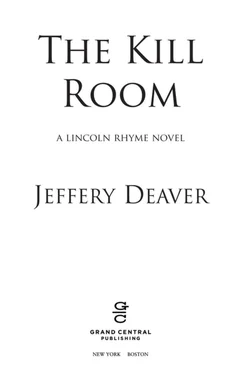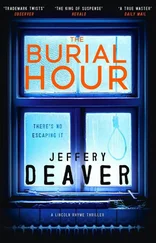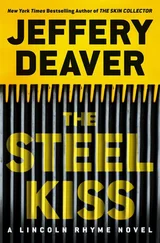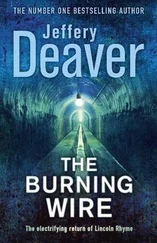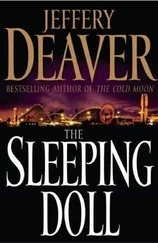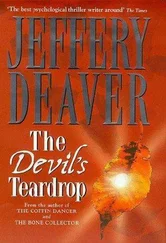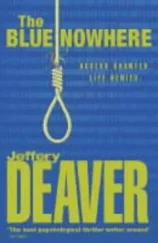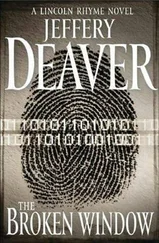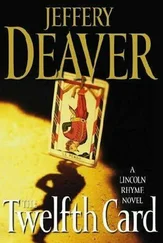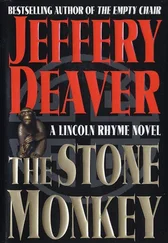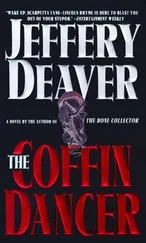CHAPTER 64
LINCOLN RHYME WAS SAYING, “And the same evidence we thought exculpated Shales by placing him in New York at the time of the shooting now helps implicate him: the phone calls from his mobile to the South Cove Inn to verify when Moreno was checking in, the metadata that placed him at NIOS headquarters in New York at the time of the death. We’ll need more, though. We need to place him at the joystick of the drone. UAV , excuse me, rookie. How can we do that?”
“Air traffic control in Florida and the Bahamas,” Sachs said.
“Good.”
Sachs called their federal liaison, Fred Dellray, with the request and had a lengthy conversation with him. Finally Sachs disconnected. “Fred’s calling the FAA here and the Civil Aviation Department in Nassau. But he gave me another idea.” She was typing on her computer.
Rhyme couldn’t see clearly. It appeared that she was examining a map. “Well,” she whispered.
“What?” Rhyme wondered.
“Fred suggested we ought to try to get a look at the Kill Room itself.”
“What?” Sellitto barked. “How?”
Google apparently.
Sachs smiled. She’d called up a satellite image of the block in which NIOS headquarters was located in downtown Manhattan. Behind the building itself was a parking lot, separated from the street with an impressive-looking security fence and overseen by a guard station. In the corner was a large rectangular structure, like a shipping container—the sort you see bolted to decks and cruising down highways behind tractor-trailer semis. Next to it a ten-foot antenna pointed skyward.
“That’s the Ground Control Station, Fred told me. GCS. He said most of the UAVs are controlled from portable facilities like that.”
“The Kill Room,” Mel Cooper said.
“Perfect,” Laurel said briskly to Sachs. “Print that out, if you would.”
Rhyme could see Sachs bristle, hesitate and then with a thumb and finger—with a dot of dried blood behind the nail—tap hard on the keyboard. A printer began to exhale.
When the document was disgorged, Laurel slipped it from the tray and added it to her files.
Sachs’s phone buzzed. “It’s Fred again,” she announced. She hit speaker.
Rhyme called, “Fred. Don’t insult anybody.”
“I can hear. Well, well, you all have yourself quite a case here. Good luck on this one. Hey, see any funny-lookin’ airplanes hovering outside your windows? Might wanta think about closing the blinds.”
This was not as funny as Dellray intended, Rhyme decided, given Barry Shales’s skill at firing million-dollar bullets.
“Hokay, the radar situation. Sentcha screenshots. What we put together is the morning of May nine a small aircraft, no transponder, was tracked heading east over the Atlantic, south of Miami.”
“Where Homestead air base is,” Sellitto pointed out.
“Right you are. Now, the craft was on visual flight rules, no flight plan. Speed was very slow—about a hundred ten miles an hour. Which is typical drone speed. We all together on that?”
“With you, Fred. Keep going.”
“Well, it’s about a hundred eighty miles to Nassau from Miami. Exactly one hour and fifty-two minutes later, ATC in Nassau tracked a small aircraft, no transponder, ascend into radar range, about six hundred feet.” Dellray paused. “And then it stopped.”
“Stopped?”
“They thought it stalled. But it didn’t drop off the screen.”
“It was hovering,” Rhyme said.
“My guess. They figured that with no transponder the plane was an ultralight—one of those homemade gizmos that sometimes just sit like birds in headwinds? It wasn’t in controlled airspace so they didn’t pay any more mind. The time was eleven oh four a.m.”
“Moreno was shot at eleven sixteen,” Sachs said.
“And at eleven eighteen it turned around and descended outta radar. Two hours and five minutes later, a small aircraft, no transponder, crossed into U.S. airspace and headed toward South Miami.”
“That’s our boy,” Rhyme said. “Thanks, Fred.”
“Gooood luck. And forget you ever knew me.”
Click.
Wasn’t conclusive but like all elements in a case it was a solid brick in the wall of establishing a suspect’s guilt.
Nance Laurel got a call. While someone else might have nodded or offered some facial clues as to the content she listened without expression; her powdered face was a mask. She disconnected. “There’s an issue with another case of mine. I have to go interview a prisoner in detention. It shouldn’t be long. I’d like to stay but I have to take care of this.”
The prosecutor gathered up her purse and headed out the door.
Sachs too received a call. She listened and jotted a few notes.
Rhyme turned from her and was regarding the charts once again. “But I want more,” he griped. “Something to prove that Shales was at the controls of the drone.”
“Ask and ye shall receive.” This, from Amelia Sachs.
Rhyme lifted an eyebrow.
She said, “We have a lead to the whistleblower. If anybody can place Barry Shales in the Kill Room on May ninth, it’s him.”
* * *
SACHS WAS PLEASED to report that Captain Myers’s officers who’d been canvassing the patrons of Java Hut when the whistleblower uploaded the STO had found some witnesses.
Her computer gave a bleat and she looked toward the screen. “Incoming,” she said.
Sellitto gave a harsh laugh. “Not a good choice of words in this case, you don’t mind.”
She opened the attachment. “People buy a lot more with credit or debit cards nowadays. Even if the bill’s only three, four dollars. Sure helps us, though. The canvassers talked to everybody who charged something around one p.m. on the eleventh. Mostly a bust but one of them got a picture.” She printed out the photo attachments. Not terrible, she decided, but hardly high-def mug shots. “Has to be our man.”
She read the officer’s memo. “‘The photographer was a tourist from Ohio. Shooting pictures of his wife sitting across from him. You can see in the background a man, blurred—because he’s turning away fast and raising his hand to cover his face. Asked the tourists if they got a better look at him. They didn’t and other patrons and the baristas didn’t pay any attention to him.’”
Rhyme looked at the picture. Two tables behind the smiling woman was the presumed whistleblower. White. Solidly built, in a blue suit, an odd color, just shy of navy. He wore a baseball cap—suspicious, given the business attire—but seemed to have light-colored hair. A big laptop sat open before him.
“That’s him,” Sachs said. “He’s got an iBook.” She’d downloaded a picture of every model.
The criminalist observed, “Suit doesn’t fit well. It’s cheap. And see the Splenda packets on the table, along with the stirrer? Confirms he’s our man.”
“Why?” Sellitto asked. “I use Splenda.”
“Not the substance—the fact it’s on the table. Most people add sugar or sweetener at the milk station and throw the empty packets out, and the stirrers too. So there’s less mess at the table. He’s taking his detritus with him. Didn’t want to leave friction ridge evidence.”
Most objects, even paper, retain very good fingerprints where food is served because of grease from the meals.
“Anything else about him?” Pulaski asked.
“You tell me, rookie.”
The young officer said, “Look how he’s holding his right hand, palm cupped upward? Maybe he was about to take a pill. Could be a headache, backache. Wait, look, there’s a box. Is it? A box at the side of the table?”
It seemed that there was. Blue and gold.
Rhyme said, “Good. I think you’re right. And notice he’s drinking tea—see the bag in the napkin?—in a coffeehouse? Looks pale. Maybe it’s herbal. Not that unusual but a reasonable deduction could be stomach issues. Check antacid, reflux, indigestion medicine boxes that come in two colors.”
Читать дальше
